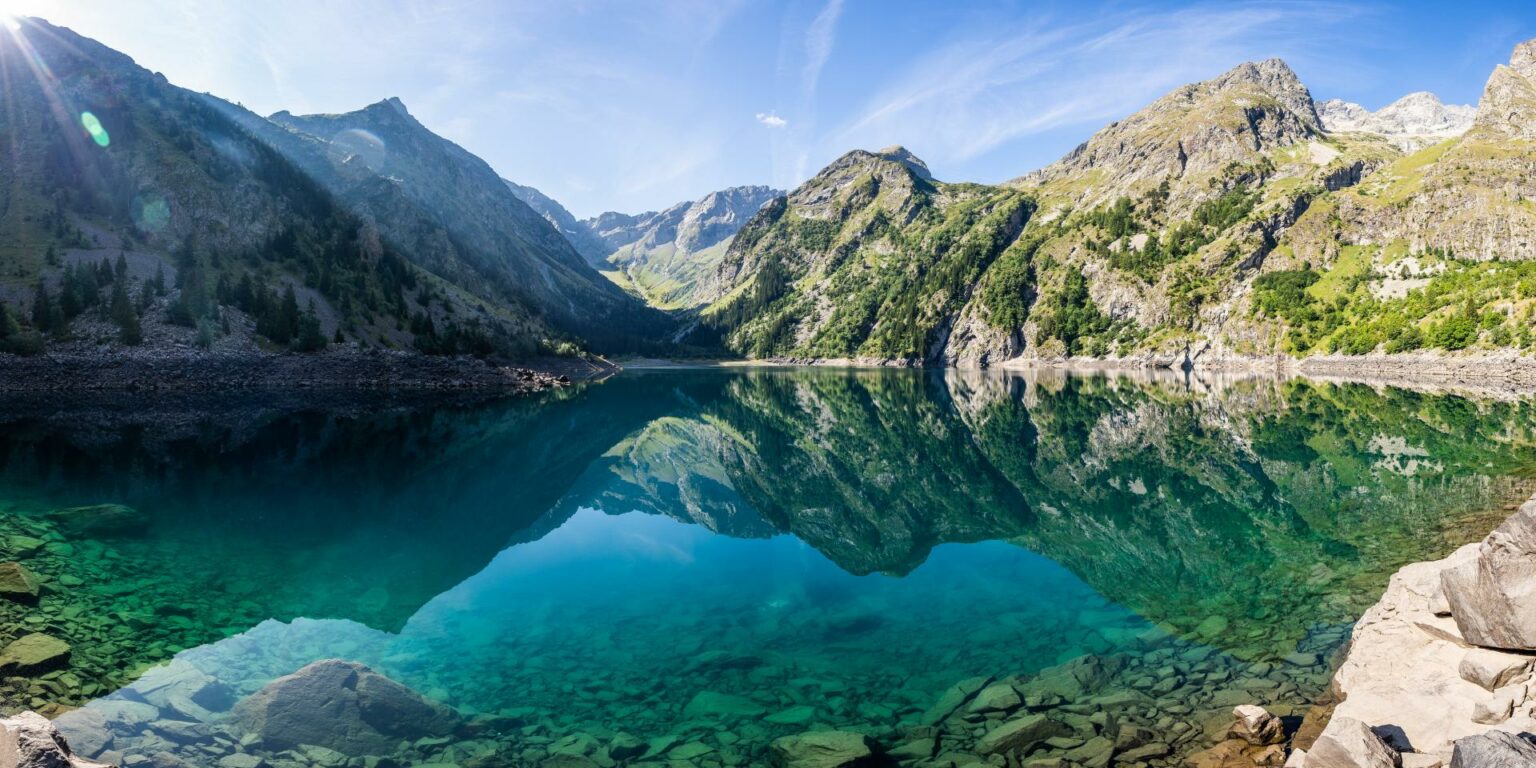With its breathtaking landscapes, exceptional biodiversity and legendary trails, the Ecrins National Park is much more than just a natural area: it's a world apart. Situated between the northern and southern Alps, it offers 740 kilometres of trails, peaks over 3,000 metres and spectacular valleys to those who want to experience the mountains in their most authentic form. Here's why you absolutely must (re)discover it this summer.
1. A paradise for hiking in all its forms
From long family walks to technical climbs, the park offers an unrivalled range of walks. Here, the routes have been shaped over the centuries by the footsteps of mountain dwellers: a dense network, carefully restored and signposted, to take you to the heart of unspoilt nature.
The trail leading to Lac Lauzon and the hut-to-hut crossings reveal a different facet of the region every day, between torrents, mountain pastures and glaciers. For those who want to go further afield, there are guides on hand to show you the way, discovering the local geology, medicinal plants and wildlife.
2. A mosaic of valleys and mountain villages
The Écrins National Park is also a succession of valleys, each with its own unique character: the Oisans and its breathtaking cliffs, the Vallouise valley with its well-kept secrets, the sun-drenched Embrunais and the Champsaur with its peaceful meadows.
READ MORE: France: Tour du Mont Blanc, GR20... Top 5 mountain walks to do this summer
Each valley is a world in itself, with its stone hamlets, icy torrents, Romanesque churches and terraced fields. As you explore these places, you'll discover a thousand and one ways of living, working and dreaming in the mountains - and you'll often find yourself wanting to stay longer.
3. A rare biodiversity, to be observed with respect
Ibexes, marmots, golden eagles, black grouse... More than 350 species of vertebrates live in the Écrins. Some, like the rock ptarmigan, are glacial relics that survive at high altitude. Others, such as the bearded vulture and the black vulture, have returned thanks to many years of reintroduction.
READ MORE: 3 ideas for hikes to explore Méribel in a different way this summer
The park is a sanctuary for this fragile fauna, where rigorous scientific monitoring enables us to better understand their behaviour. Equipped with binoculars, the discreet hiker can cross the path of a chamois at dawn or hear the hooting of a Tengmalm's owl at dusk. It's also an opportunity to learn more about modern search methods, from geolocation to DNA analysis.
4. Spectacular, little-known high-altitude flora
From the robust larch to the most microscopic of glacial phytoplankton, the Écrins are home to more than 2,500 plant species. Some, like the Alpine Queen or the Dauphiné potentilla, are endemic and extremely rare. Others form astonishing landscapes: steppe grasslands, cembro pine forests, cushions of vegetation clinging to the cliffs.
In summer, the mountain is transformed into a veritable open-air botanical garden. Plant enthusiasts can even follow themed itineraries with botanists, using a magnifying glass or the naked eye, to find out what's behind every flower in the heights.
5. A vibrant, committed and exemplary region
Created in 1973, the Parc national des Écrins is not a static museum: it is a living player in the region. It brings together elected representatives, local residents, associations and scientists to work on a common project: preserving, studying and passing on information.
Its mission goes far beyond protection: it also supports sustainable local development, organises events, publishes educational resources and maintains an ongoing dialogue with its member municipalities. Thanks to its teams in the field, its Maison du Parc in Gap, its rangers and its partners, it works every day to ensure that nature and human activities coexist in harmony.

